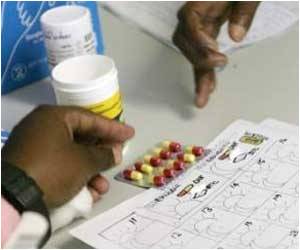A new hospital opened by the Chickasaw Nation blends sacred Native American healing traditions with cutting-edge medicine.

Instead, they take an approach based on the belief that patients can recover more quickly when their cultural and spiritual beliefs are accommodated.
"Although we rely on conventional medicine, there are still folks who believe that healing is not just for your physical body... it's for your spirit as well," said Bill Anoatubby, governor of the Chickasaw nation that numbers more than 49,000 citizens.
Chickasaw traditions include deep ties to nature and family, so the Chickasaw Nation Medical Center was designed to provide a peaceful environment with space for healing ceremonies and plenty of visitors.
Large windows eliminate the need for artificial lighting on sunny days and provide patients with soothing views of the prairie sky and 230 acres (93 hectares) of green fields and woodlands from their spacious rooms.
"It cheers you up -- you don't feel trapped in this box," said Larry Speck, lead architect on the project with Austin, Texas-based PageSoutherlandPage.
Advertisement
And since the 370,000-square-foot (34,370-square-meter) center -- the largest Native American hospital in the United States -- serves members of all federally recognized tribes, it was also designed to accommodate other tribal practices.
Advertisement
Native Americans have struggled against a neglectful and at times oppressive federal government since the founding of the republic, and to this day the nation's 1.9 million Native Americans in 565 federally recognized tribes still suffer from discrimination and higher rates of poverty.
The hospital replaces an outdated facility that was surrounded by fast-food restaurants on a busy street in nearby Ada, Oklahoma, and brings more sophisticated medical equipment to the underserved Native American population.
The 145 million-dollar center was paid for with revenues from casinos and other business ventures like chocolate factories, and the Bureau of Indian Affairs' Indian Health Service pays for the staff.
The center includes a 72-bed hospital, an emergency department, a diabetes care center, a women's health center, a dental clinic, a diagnostic imaging center and tribal health programs.
A centrally located "town center" bridges the patient care centers and administrative offices.
"The setting is very calm and peaceful," said Dr. Judy Parker, the hospital's administrator.
"We're having more patients requesting that they stay another day," she told AFP. "That didn't happen before."
The facility also houses the region's only 256-slice CAT scan and the imaging department will also provide mammography, ultrasound, bone scan and MRI services.
The facility's architects worked to embody Chickasaw traditions in all aspects of the building, finding inspiration in the tribe's traditional jewelry and art.
Long diamond patterns on the floors and ceilings echo a stunning Chickasaw beaded necklace displayed in the hospital's lobby.
Four graceful canopies modeled on traditional woven baskets line the entryways to the hospital and clinic areas, while limestone from four area quarries and local copper panels bring earth elements into the design.
Chickasaw art lines the walls, including a walkway leading to the surgical waiting area, which displays paintings of Chickasaw elders by renowned tribal artist Mike Larsen.
One of the paintings is of Pearl Carter Scott, who became the nation's youngest licensed pilot in 1928 at the age of 13.
"So many of the people who come through here know these people," said Debbie Jackson, Chickasaw director of customer relations.
"It makes people comfortable to have the arts and the crafts."
Source-AFP



![Health Insurance Portability and Accountability Act [HIPAA] Health Insurance Portability and Accountability Act [HIPAA]](https://images.medindia.net/patientinfo/120_100/hipaa.jpg)





